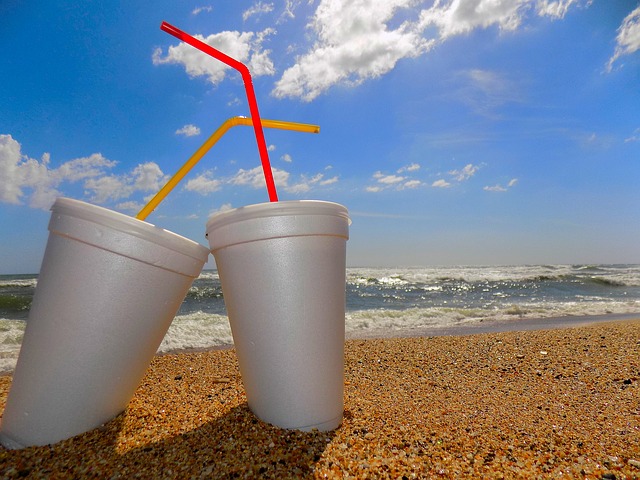Voters will be given a chance next year to outlaw Styrofoam take-out food packaging. Is this a necessary step, or another instance of the California rush to ban yet another consumer convenience?
The proposition, one of four statewide measures scheduled on the November 2022 ballot, not only would “prohibit polystyrene container use by food vendors,” according to Ballotpedia, it also would “require that single-use plastic packaging, containers, and utensils be reusable, recyclable, or compostable.” Among several other demands, it would, as well, force “producers to reduce the amount of single-use plastic packaging and foodware sold in California by at least 25% by 2030.”
Given that more than 100 governments in the state have already banned containers made of polystyrene (often known by the brand name Styrofoam), the fact the measure is citizen-initiated, and policymakers are prosecuting an emotional war on plastics, it seems unlikely to fail. For many it will be a feel-good vote. Having been bombarded for years with horror stories about masses of ocean plastic; ugly images of plastic littering rivers, beaches, and land; and constant lectures about the environmental impacts of processing of fossil fuels into plastic products while being relentlessly told to recycle, reduce and reuse, Californians have been conditioned to disapprove of plastics.
But their story is much more complex.
First, California can do little about plastic pollution in the oceans. Roughly 90% of the plastic that flows into the sea was carried there from 10 major rivers in Asia and Africa, according to Germany’s Helmholtz Center for Environmental Research.
While not an unknown study, the Helmholtz report clearly hasn’t been cited widely enough to overcome the common bias against plastics in the West. The center’s findings, as well as the fact that of the 79,000 metric tons of plastic found in the Great Pacific Garbage Patch, most is abandoned fishing equipment, “not plastic bottles or packaging,” should motivate California re-examine its recycling mania. Much of our waste is shipped to Third World nations, where “more than 70%” of it is mismanaged rather than recycled, much of it eventually finding its way into the ocean. Better to throw used plastic in the big black can rather than the big blue one. A straw destined for a landfill is far less likely to be later found in the nose of a giant sea turtle.
Recycling is one of the most misunderstood, and counterproductive, modern practices. While with the New York Times, John Tierney wrote what amounts to an expose for the newspaper’s magazine in 1996, headlined “Recycling Is Garbage.” It both generated the greatest volume of hate mail in the Times’ history and exhaustively discredited recycling with clear-eyed facts and data.
Tierney has followed up on the original, and the story remains the same. Last year he made the case in City Journal that “disposable products are sanitary, efficient, and environmentally sound.” He cited a study that found if New York City eliminated its recycling program and instead sent “all its municipal trash to landfills, it “could now save taxpayers hundreds of millions of dollars annually – enough money to increase the parks department’s budget by at least half.”
As much as recycling is revered, landfills are reviled. But every gram of plastic in a landfill could be one less gram of plastic in the ocean. Would not that be a worthy goal?
Shifting plastics from the recycling chain to sites designed to handle them would not constitute a radical change, as those invested in recycling would surely argue. Anywhere from half to 70% of plastics collected in the waste stream ends up in landfills anyway.
Today’s landfills should not be mistaken for the filthy city dumps from previous generations. They are instead sophisticated operations that would make a fascinating topic for History’s “Modern Marvels” series. (Which in fact they have.) They are “well-engineered,” according to the federal Environmental Protection Agency, “designed to protect the environment from contaminants,” are regularly monitored, and “must meet stringent design, operation and closure requirements,” so the land can’t be spoiled for an alternative use in the future.
Landfills also make efficient use of space.
“All the trash generated by Americans for the next 1,000 years would fit on one-tenth of 1% of the land available for grazing,” John Tierney, famous and infamous for his 1996 New York Times Magazine expose “Recycling Is Garbage,” wrote in 2015 in one of his follow-ups.
A reasonable person would have to agree that that doesn’t “seem a huge imposition” on a country as large as the U.S.
Polystyrene might well join single-use plastic bags and other plastic items as contraband in California. But it’s not clear that proscribing any of these products is an unalloyed benefit.
Kerry Jackson is a fellow with the Center for California Reform at the Pacific Research Institute.

